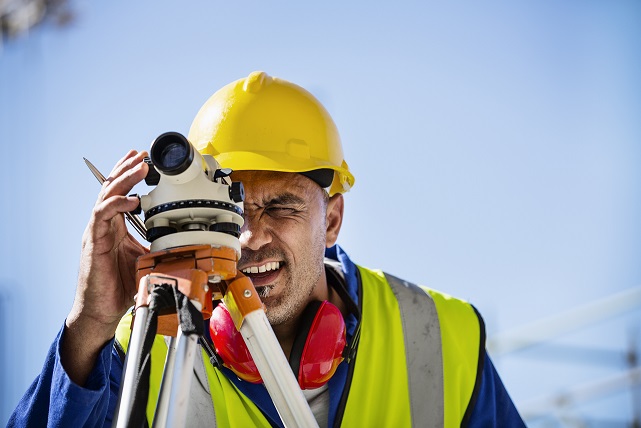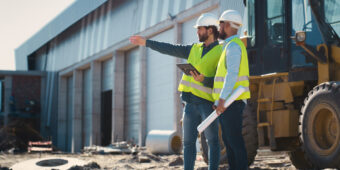SETTING OUT A SITE
22 Sep 2021, Learn, Prove Your Know How, Technical

It can be an expensive mistake if a house is not correctly set out on site. This happens too often, so here are some basics for getting it right
A house built in the wrong position on a section can cause major problems. For example, if built too close to a boundary, it may not meet district plan requirements or comply with the New Zealand Building Code requirement of a minimum separation distance to the relevant boundary or neighbouring buildings.
Non-compliance could be costly
Those deemed responsible for the error can potentially be sued for thousands of dollars of compensation, while anyone adversely affected by a wrongly located building may sue for compensation.
Responsibility may be attributed to one or more parties, including the owner, building consent authority, designer or builder. To avoid litigation, it is essential that new buildings are correctly located on sites – as residential sections have become smaller, there is little room for error and accurate location is even more critical.
Survey the site
Before setting out and establishing the exact location and relative height of a new building, an accurate survey of the building site is required to:
- Locate boundary pegs or boundary offsets to permanent fixtures.
- Determine site and boundary levels.
- Establish locations of existing boundary fences and retaining
- Establish position and level of relevant off-site features – for example, crown of road.
- Locate relevant survey reference points – for example, lead plugs and site datum points.
- Establish the location of existing underground and overhead services.
- Establish the location of existing buildings, site features and planting to be retained.
Designer’s responsibility
Once the site information has been gathered, the designer has the initial responsibility for locating the planned building on the site and must ensure that the proposed location complies with district plan requirements. These include checking requirements for:
- Resource consent.
- Site coverage.
- Allowable total floor areas on some sites.
- Location including:
- Front yard
- Side and rear yards.
- Building set-back lines in some areas.
- Permitted heights and building recession or sunlight access planes.

Describing the location
The designer must describe the building location, using a reference point such as a boundary peg or other permanent marker, from which measurements can be made (Figures 1 and 2). The reference point must have dimensions given in two directions to enable the builder to establish offsets or locate a corner of the building. On rectangular sites, a wall of the building may run parallel to a boundary, but on irregularly shaped sites, this may not be the case.
A datum level that provides a reference to establish a relative building height must also be selected. This may be a permanent feature on or near the site such as a manhole cover or a concrete kerb.
The builder’s role
On site, the builder must establish the location of the boundary corners. If survey pegs are not present, a registered surveyor should be employed to establish exact boundary locations.
Using a theodolite to measure from the selected reference point, the location of the first corner of the building may be determined. A building line marking out one side of the building – preferably a long wall – can be established, and a second building corner can be
located on this line. The remaining external wall directions and locations can then be determined.
A dumpy level or theodolite can be used to establish the relative heights for the building from the datum level.

Building profiles
Building profiles are erected to enable the exact location of the building to be marked out on site. They should be located outside the building perimeter, approximately 1.2 m but a minimum of 900mm away (see figures 3a and 3b overleaf).Profiles consist of braced stakes driven into the ground and connected by horizontal batter boards. The upper edges of the batter boards must be level with one another. The building lines that locate the perimeter walls of the proposed building are marked out by string lines tied to nails driven into the top edge of the batter boards. The string lines should run at least 20mm above floor joists or finished floor slab level to be clear of the construction.


The theodolite
A theodolite is used to measure horizontal and vertical angles and distances. It consists of a telescope that pivots around both horizontal and vertical axes. Modern theodolites are integrated with an electronic distance measurement (EDM) device.
Before the use of the theodolite, triangulation – also called the 3-4-5 triangle rule – was used to establish 90° angles. This rule states that, if a triangle has sides of 3, 4 and 5 units long respectively, the angle opposite the longest side will always be a right angle – that is, a 90° angle (Figure 3b).
Article by Alide Elkink. First published in Issue 185 of BRANZ Build magazine www.buildmagazine.co.nz. Words, images and figures supplied by BRANZ.
Register to earn LBP Points Sign in
3 Comments
Leave a Reply
You must be logged in to post a comment.




Brilliant
Setout 101
done